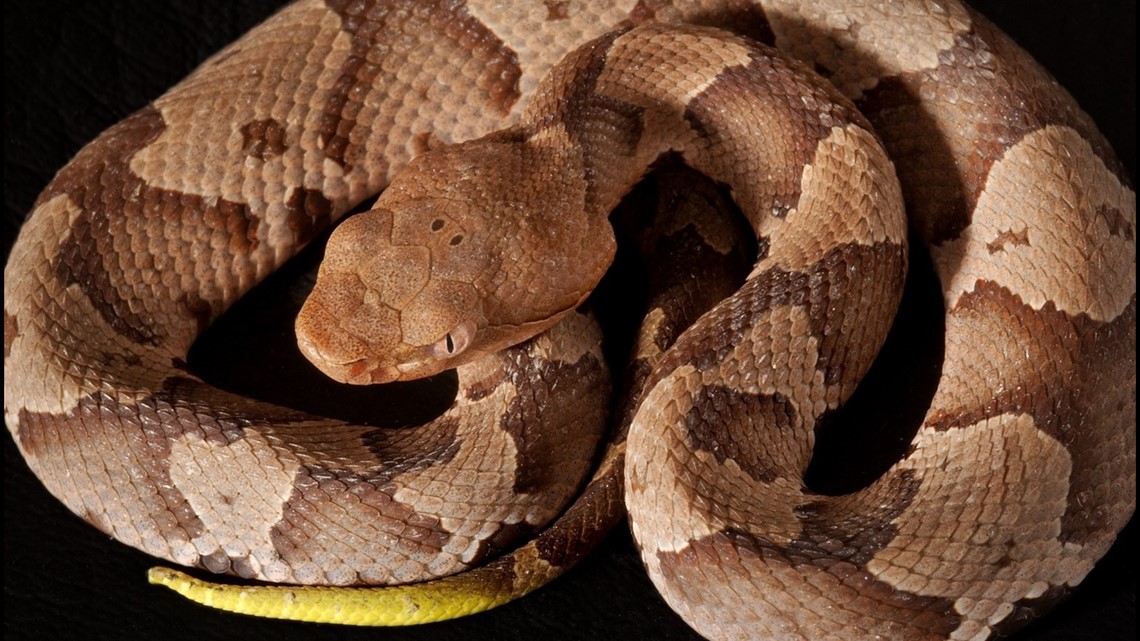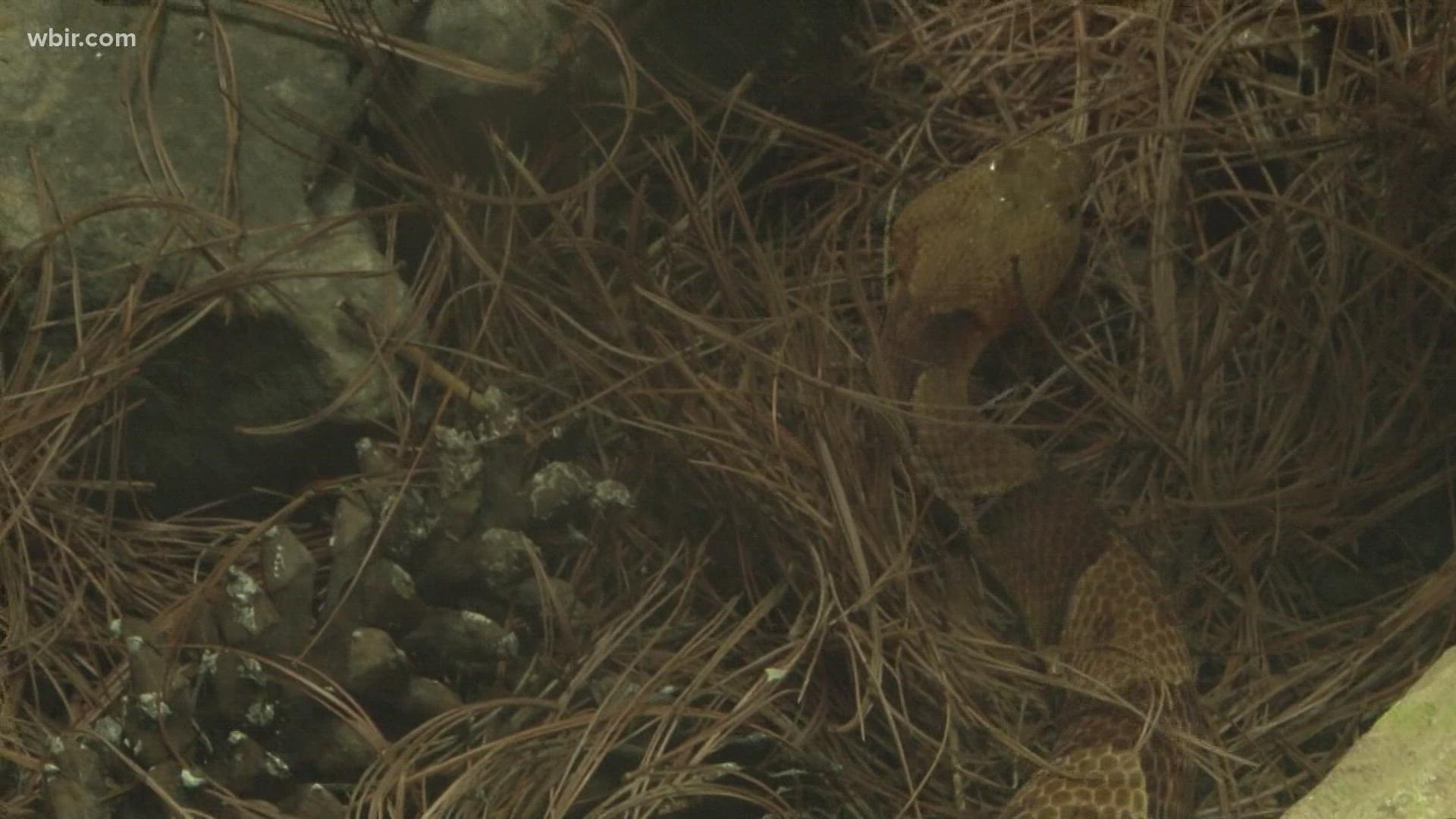KNOXVILLE, Tenn — It's that time of year again: The days are getting shorter, the air is getting cooler and snakes are slithering around Tennessee.
State officials said now until November marks baby copperhead snake season.
"If you are hiking or walking, be sure to look carefully where you step or place your hands," Tennessee Valley Authority tweeted. "Baby copperheads are small and like to hang out in damp places like logs on the trail or flowerpots in your yard!"
Zoo Knoxville said copperheads are typically born between August and October, and in East Tennessee they are usually found along river systems in lower elevations. Most mother copperheads give birth to between 1 - 21 baby snakes during this time.
Tennessee Wildlife Resources Agency breaks down copperhead mating: "Males locate females by scent and often fight other males in a vertical combat, in which front third of their body becomes airborne and entangled. Copperheads, like other vipers, produce relatively few young."
Zoo Knoxville said you can usually tell you are staring down a young copperhead if you see a yellow-tipped tail like the one below.


TWRA said young Copperheads "wiggle the bright yellow tip of their tail to lure prey within striking distance, a behavior known as caudal luring."
Of course, you should just leave snakes alone if you see one.
"People getting bitten by venomous snakes are messing with them," Zoo Knoxville Director of Animals Phil Colclough said. "They're picking them up. They're trying to move them. Trying to kill them. So, yeah, just leaving them alone is the trick to avoid getting bit by a venomous snake."
While copperhead snakes usually aren't aggressive, anyone who gets a snake bite should still see a medical professional immediately. Copperhead venom is not very potent so fatalities from bites are extremely rare, TWRA says.
TWRA says Copperhead's usually measure 24-36 inches in length. Copperheads eat mice, small birds, lizards, snakes, amphibians and insects.

